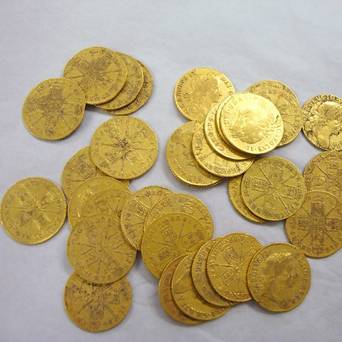Posts by Ian Glen
Rare US Coin, once thought a fake, could fetch $5m at auction
A 5 cent American coin with a fascinating story dating back one hundred years is due to go down in the history books as one of the highest amounts ever paid for a US coin when it goes up for auction in Chicago on April 25th.
Experts believe bidding for the 1913 Liberty Head Nickel could top $5m due to the fact it’s one of only five known to exist and the remarkable story behind it.
Ill-gotten gains
It’s thought the Liberty Head is one of five bogus coins struck in secret at the end of 1912 by Philadelphia Mint employee Samuel Brown who altered the year on the die to say 1913, the year the Buffalo Nickel was introduced.
Pulled from the wreckage
Brown was rewarded handsomely for his efforts. He sold one of his ‘illegal’ Liberty Heads to a collector from North Carolina, George Walton, in the mid 1940s and made a reported $3,750. But events took another unexpected twist when Walton – and his coin – were involved in a car crash in 1962. Walton himself didn’t survive but his nickel did.
Declared a fake
But the story doesn’t end there. Recovered from the wreckage and passed to Walton’s sister Melva Givens, the coin was declared a fake because the date had been tampered with. Rather than throwing it away, Mrs Givens stuck it in an envelope in a bedroom closet where it remained undiscovered until her death thirty years later.
The missing fifth Liberty Nickel
It wasn’t until 2003 that experts at the World Numismatic Fair in Baltimore finally confirmed the ‘Walton’ Nickel was genuine and it was reunited with the other four coins. It is currently on loan to the Colorado Springs Museum.
A 1933 Double Eagle currently holds the US record when it was sold at auction for a cool $8m.
View The Westminster Collection’s full range of American coins.
17th century Gold coins found under Irish pub floor
It was definitely a case of the luck of the Irish after builders recently discovered one of the country’s biggest ever hoards of gold coins buried beneath the floorboards of a County Tipperary pub.
Eighty-one gold coins, mainly from the 17th century, were found concealed by soil by one of the workmen carrying out groundworks at Cooney’s pub in Carrick-on-Suir, one of the oldest pubs in the county until it was destroyed by fire.
All that glitters
Most coins were, surprisingly, in excellent condition considering they date back to the reign of Charles II, James II and William and Mary. It’s thought the hoard is largely made up of guineas and half guineas, British gold coins struck by The Royal Mint between 1663 and 1814 using gold from West Africa – which is where the name ‘guinea’ came from.
Biggest find in over fifty years
Research is currently underway to identify where the gold coins might have come from. Some experts believe they may have once belonged to a wealthy merchant as the town was a thriving trading centre in the 17th century. Others have different theories.
One thing they do agree on is that the discovery is the most exciting archeological find in Ireland’s history since 1947 when a collection of over 100 gold coins plus a number of silver coins was discovered in CountyLaois.
At the time of writing, it’s not known whether the workmen received any sort of reward but it’s got to be a worth a free pint at the very least!
Interested in historic coins?
The gold coins are currently on display at the National Museum of Ireland. A selection of historic coins from The Westminster Collection can be found here.
Will our Penny be next?
Last week Canada became the latest country to bid farewell to its penny or 1 cent coin. Australia, Brazil and Sweden have already ditched theirs – the question is will the UK be next?
With over 11 billion in circulation according to latest Royal Mint figures, the humble penny accounts for nearly 40% of all Britain’s circulating coins. It is in fact our most common coin but when it costs more than a penny to make a penny, surely its days must be numbered?
Opinion is divided
Those in favour of getting rid of it say you can’t buy anything for a penny these days. True – the penny chews of my youth have now gone from our sweet shops. You can’t even ‘spend a penny’ anymore (that’ll cost you as much as 30p for the privilege). Put simply, 1p coins have no other function but to weigh down our purses and pockets.
But, in these tough times, every penny counts. Those against the move say there are plenty of people that still need the 1p and other small denomination coins. How many of us pop our loose change in charity collecting boxes when we’re out and about? They may be small amounts but they all add up.
A future collector’s item?
So it is probably fair to say that keeping hold of your old pennies is unlikely to make you rich. However, when they do finally disappear from our change (as is almost certain at some point), they are certain to remain an important part of Britain’s numismatic heritage for centuries to come.
Penny for them
Ultimately the “Master of the Mint” Chancellor George Osborne will make the final decision but what are your thoughts – should the penny stay or go?



